The Double Benefit of Athletes and Businesses From NIL
By Parker Matthews, Amelia Craig and Jack George
BLOOMINGTON, Indiana (Nov. 5, 2024) - Fresh off another Indiana University football win over … Continue Reading ››FOR IMMEDIATE RELEASE
Media Contacts
Ethan Bonheur
Gabe Morrison
Lauren Kuechenberg
With the NCAA’s 2021 decision allowing college athletes to profit off their name, image, and likeness (NIL), student-athletes nationwide have gained new opportunities and complex choices. No longer bound by NCAA restrictions on athlete compensation, students now weigh financial opportunities alongside traditional factors when choosing colleges. This has made NIL a critical factor in the recruitment process, with schools nationwide—particularly in states like Indiana—without comprehensive NIL laws. For Butler University’s D1 basketball player, Ryder Cate, deciding where to play college ball wasn’t just about finding the right coach or campus culture. The potential for NIL income had become a part of his college equation—a factor unimaginable a few years ago. Emily Bonchik, Chair of the Student Athletic Board at Indiana University, observes this shift firsthand. “High school athletes today are looking for a complete package in their college experience,” she explains. “They’re not only evaluating athletic facilities and academic programs; they’re also considering which schools have robust NIL support systems that can maximize their financial opportunities and brand-building potential.”
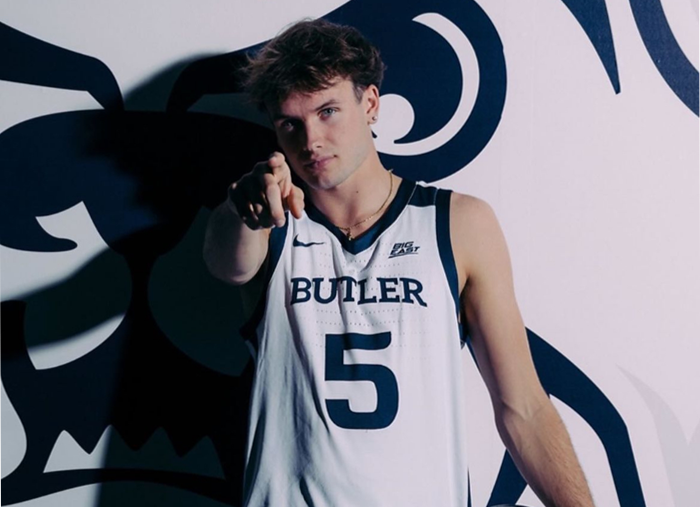
NIL rights have transformed the college recruitment landscape, promoting high school athletes to consider not only where they can play well but also where they can earn well. This shift is particularly significant for athletes like Cate, who have the potential to leverage their talents and social media followings for financial gain. Dr. Galen Clavio, director of the National Sports Journalism Center at Indiana University, notes that NIL has fundamentally changed how athletes approach recruitment. “We are seeing athletes become more strategic in their choices.” He states, “For many, especially those from financially constructed backgrounds, NIL income is not just a bonus; it’s a necessity that can significantly impact their futures.
In Indiana, the absence of specific NIL legislation until recently has presented challenges for the state’s schools in competing for top talent. While other states, like California and Texas, have enacted laws that promote NIL activities for athletes, Indiana has taken a more cautious approach. However, the Indiana University Athletic NIL Policy, updated in September 2023, provides a comprehensive framework for student-athletes to engage in NIL activities while following NCAA regulations. Bonchik describes IU’s proactive stance in addressing these challenges. “We’ve started initiatives to educate athletes about NIL and help them navigate the process,” she states. ”Understanding contracts and how to build a personal brand are critical skills for our athletes in this new environment. Bonchik highlights that Indiana University has been at the forefront of integrating NIL education into its athletic programs, ensuring that student-athletes are well-informed about their rights and opportunities. “It’s about empowering our athletes to make informed decisions,” she said. “We want them to take full advantage of the resources available to them.”
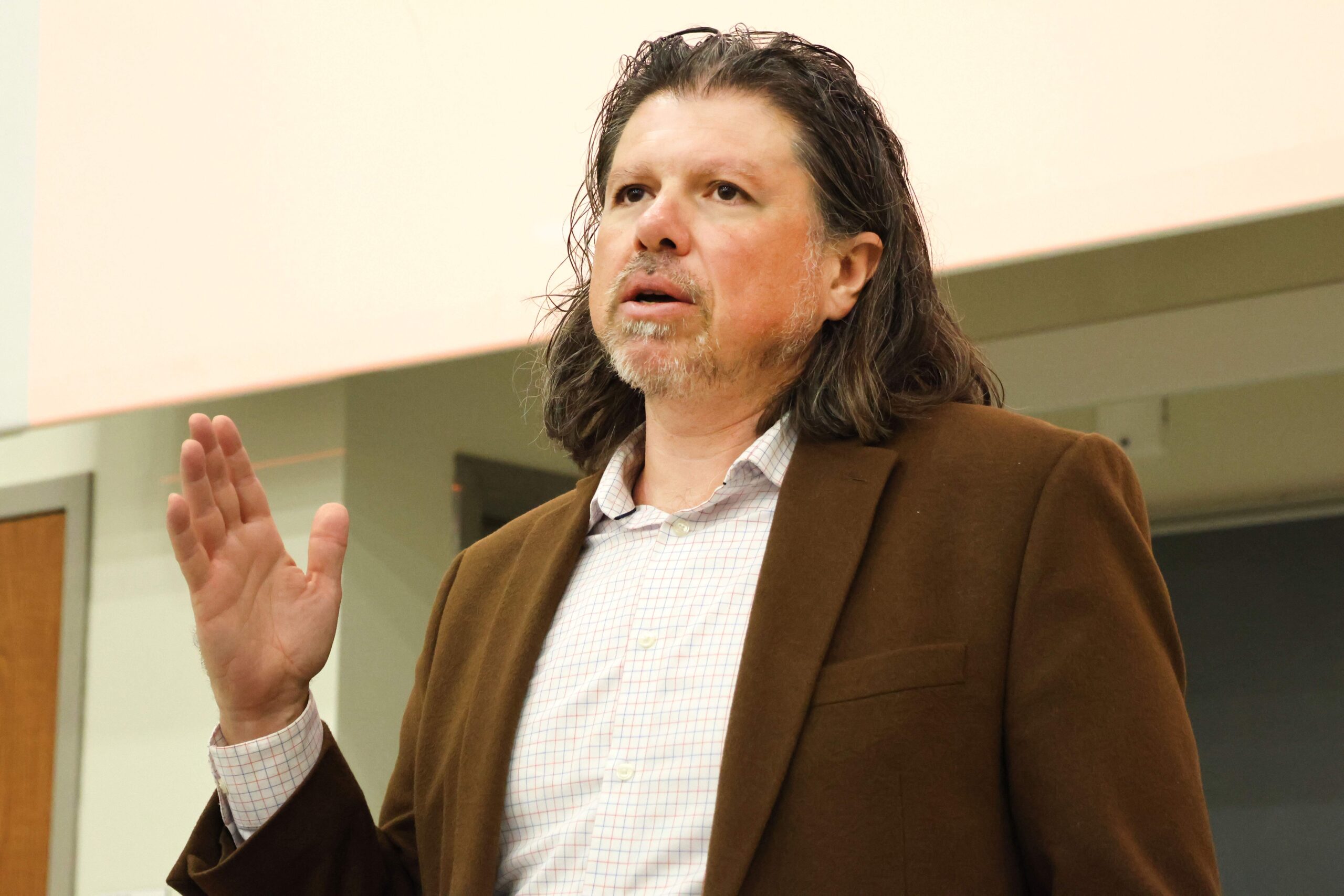
The introduction of NIL rights has brought numerous opportunities for athletes, but it also creates challenges. According to an article from ESPN, while NIL has been a bonus for many athletes, concerns remain regarding equity and access. Some schools, particularly those with fewer resources, struggle to provide the same level of support as larger programs. This imbalance can create hurdles in recruitment, as athletes tend to gravitate toward schools with established NIL networks. Dr. Clavio elaborates on this issue: “The disparity in NIL resources can lead to uneven recruitment practices. Schools that can offer robust support systems and connections to local businesses have a significant advantage in attracting top talent.” This financial imbalance not only affects the athletes but also the competitive landscape of college sports, creating a situation where some programs are more likely to attract athletes based on their NIL capabilities.
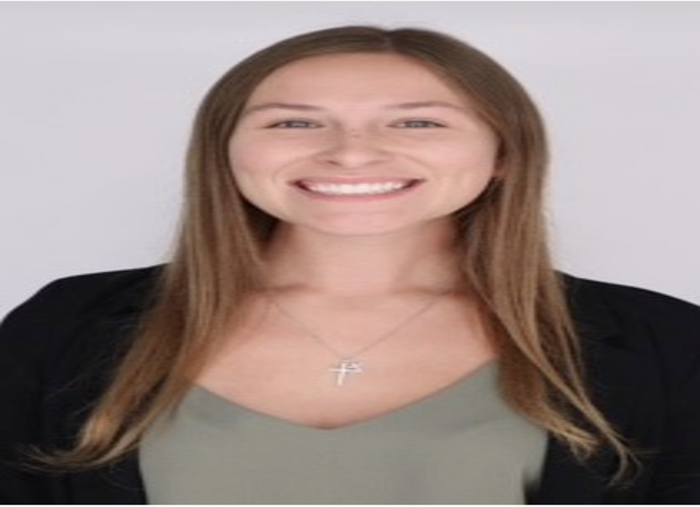
In response to these changes, some universities are investing in resources to prepare their athletes for the complexities of NIL. This includes workshops, mentorship programs, and legal assistance for understanding contracts and negotiations. The Indiana University NIL initiative, which enlists law students to help navigate NIL agreements, exemplifies the university’s commitment to supporting its student athletes in this new landscape. Bouchik says, “Our goal is to ensure that athletes are not capitalizing on NIL opportunities but also able to balance these pursuits with their academic and athletic responsibilities.” The initiative has proven beneficial for many athletes, allowing them to focus on their sports and academics while simultaneously exploring their earning potential. Cate, reflecting on his experience at Butler University, states, “Knowing that the university supports us in understanding NIL was a huge factor in my decision. It makes a difference to have resources available to navigate this new terrain.” Cate emphasizes that athletes should not only seek financial gain but also prioritize personal growth and education.
As the NCAA continues to refine its approach to NIL and more states develop supportive legislation, the recruitment landscape will continue to evolve. Athletes will increasingly weigh financial opportunities alongside traditional factors such as coaching and academic programs. For Cate and his peers, the message is clear: the future of college sports is not just about playing games; it’s about building brands and securing financial futures. “We’re in a new era of college athletics,” Cate says. “NIL is a game changer, and it’s exciting to see how it will shape the future for athletes like me.” The NIL era represents an opportunity to not only compete at the highest level but also take charge of their financial destiness. As this continues to evolve, the potential for growth and empowerment within college sports has never been better, making it an exciting time for athletes.
We interviewed a variety of IU faculty and students to hear their thoughts on NIL. NIL has played a major role for college athletes for the past few years and now it has become more important than ever making it a popular topic of discussion.
ESPN. (2023). How NIL has impacted college sports: Balancing opportunities and challenges. ESPN. Retrieved October 2023.
Indiana University. (2023). IU athletic NIL policy: Guidance for student-athletes.
###
By Cassidy Roche, Alex Gastineau, and Peyton Cripe
BLOOMINGTON, Indiana (Nov. 5, 2024) – Before the NCAA rulings on name, image, and likeness, student-athletes devised creative ways to make money and avoid violations.
As of 2021, college athletes can profit from their NIL and are given opportunities to earn what they would have made in the past. Historically, these athletes would have been fined if they were found profiting from their NIL. Therefore, they came up with ways to pocket some extra cash in a way that wouldn’t get them in trouble with the NCAA.
Trey Humphrey, the owner of Hoosier A1 Vintage, has been working under the radar with student-athletes by helping them avoid these violations from 2020 to 2021. However, it wasn’t easy and came with many challenges. “Obviously dealing with athletes before that time as a business was… completely different because you couldn’t have them promote your business,” Humphrey said. Colleges would flag an athlete for attempting to use their likeness if they made any sort of wage. This led to Hoosier A1 Vintage receiving cease and desist orders from IU for having athletes show up to advertise the business and appear in promotional material.
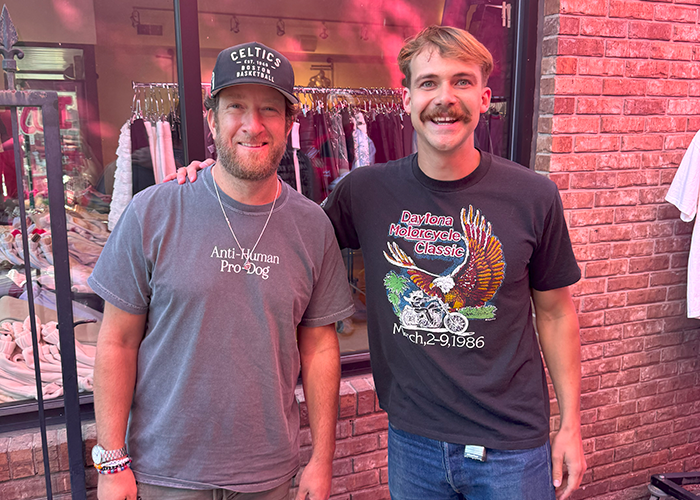
Humphrey also aims to help athletes start their small businesses. By partnering with these clothing businesses owned by IU athletes, he could create pop-ups as a way to sell their clothing in collaboration with his store. This way the athletes could make their own money at the Hoosier A1 Vintage pop-ups which doesn’t require using their likeness. From the NCAA’s point of view, it isn’t clear if the athlete is getting paid out or making money in some other way. “[It’s about] focusing on personal relationships, not putting money in their pockets,” Humphrey said when asked about how workflow has changed since the NIL ruling. He now, more than ever, values his relationships with the athletes instead of the monetary aspect.
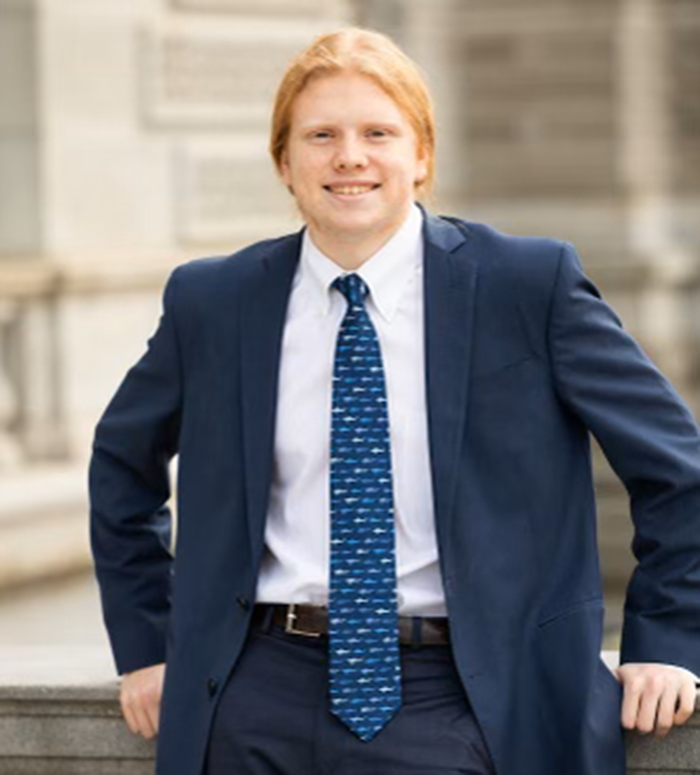
Although NIL has come a long way, collegiate athletes have gotten into a lot more trouble for showing up in promotional material in the past. Turner More is an IU student and social media marketer for Red Cup News. He recalls when the head basketball coach at Syracuse, Jim Boeheim, had wins stripped away because a couple of his players were paid to coach an amateur basketball league. “I remember growing up a Syracuse fan. This was impactful to me because it seemed like these athletes weren’t doing much wrong and were doing something good for the community,” More said. Volunteering for the game was outside of the player’s media rights, which is why they got in trouble for it. These media rights are a long list of things athletes can and can’t do to promote themselves or earn money based on their NIL. Other athletes saw scandals like this and took precautions in how they made their money. There were a lot of under-the-table deals with families and promises for athletes for when they graduated, More said. Some universities would make promises like these to keep athletes from leaving and players would hold on to these deals in hopes of being able to earn extra money.
Expanding on these under-the-table payments from boosters and the universities themselves, comments from an expert on IU’s campus include more than a negative outlook on athletes not being able to make money pre-NIL. Jeremy Gray is the Senior Associate Athletic Director for Strategic Communications and Director of the Cuban Center. After interviewing him about some ways athletes in college made money before the NIL ruling, he explained that there was a lot of cheating going on. One way universities got around paying their players without repercussions was by having them work camps. Overall, he called the situation before the ruling “fundamentally unfair” for student-athletes.
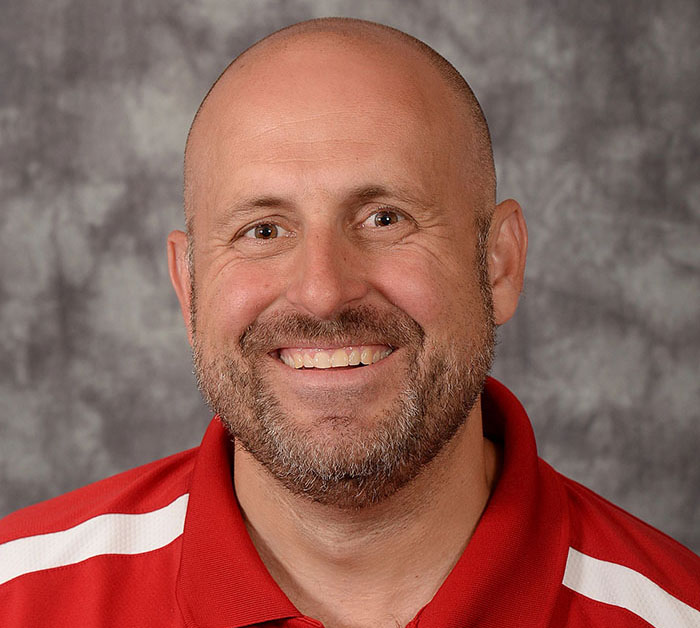
When asked his opinion on athletes having to get around the NCAA to make money pre-NIL, he stayed firm in his stance. “It was unfair. Any of you can make money by being an Instagram influencer, but they can’t?” Gray said. Pointing out the fact that any college student can profit off of their own NIL if they aren’t a student-athlete wavers an argument that has been echoed across the nation. Former collegiate athletes have spoken out about how because they didn’t have the opportunity to capitalize on their NIL previously, they are frustrated and want to carry out lawsuits.
Although this is an ever-changing hot topic in the sports industry, uncovering ways that student-athletes provided for themselves opened up an opportunity to shed light on why NIL ruling is important to the athletes of today.
On Sunday, October 20th strangers on Kirkwood gave their opinions on athletes having to get around NCAA violations before the 2021 NIL ruling. The interviewees explained their stances on how athletes should have gone about making money and if it was justified.
###
By Sydney Bailey, Keane Blackbourne, and Carson Hilbert
Name, Image, and Likeness brought along many benefits for student-athletes individually. In 2021, the Supreme Court made a landmark decision regarding NIL deals in the case National Collegiate Athletic Association v. Alston. This case entirely changed the game for college athletes as they were now allowed to make profit on their name, image, and likeness due to the opinion of the Court. The benefits that this case has on college athletes are plentiful, as they are now able to see money flowing straight into their pockets from NIL deals. Freshman Volleyball player at The Ohio State University, Olivia Hasbrook, shares her insight on how the new NIL ruling has positively impacted her as an individual.
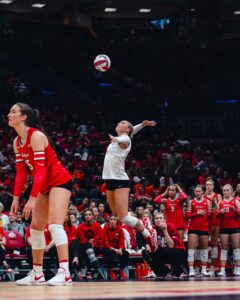
Hasbrook quickly settled an NIL deal with Ozuna Fresh, an air freshening company, quickly following her arrival at Ohio State. Hasbrook states, “Ozuna Fresh has given me several free products that I use in my dorm and locker room that are really nice to have.” Aside from the products she’s received, Hasbrook addresses how her NIL deal has benefitted her financially as she explained, “Ozuna Fresh has given me a lot of opportunities for money with paid media day opportunities as well as connections with other athletes.” The NIL ruling has made several athletes’ lives easier as they no longer have to worry about financials while being an ‘unemployed’ college athlete.
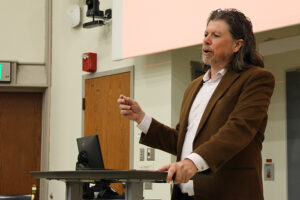
NIL has helped many athletes to financially benefit off themselves. Dr. Clavio, a professor for IU and Director of the National Sports Journalism center, spoke about what NIL is and what it’s doing for athletes. NIL especially has given light to women’s sports with athletes like Caitlin Clark, Livvy Dunne, and Angel Reese have made a huge pathway for women colligate athletes.
“NIL has opened a door for women sports,” says Dr. Clavio, “It’s easier to view college athletes compared to five years ago.” Women’s sports due to NIL has made viewers more interested in women’s sports. Especially when rising stars in women’s college basketball such as Paige Bueckers and Flau’jae Johnson now starting to rise it could raise the standard even more for women’s sports.
Also, with the new settlement college athletes will receive more money after a judge granted a $2.78 billion legal settlement to those athletes. With this NCAA schools are going to be limited to spend around 23 million each year with the money of the cap rising each year. The schools will be restricted to pay around 22% of media revenue, ticket revenue, and sponsorships revenue with student athletes. This settlement means that athletes could get paid even more money than what they have been before if the cap gets higher and higher.
“There’s no legal basis for the amount the athlete can be paid,” says Dr. Clavio. With this information athletes could potentially paid millions or even and could be paid similar to what professional athletes are. This could be potentially very tricky for schools but positive for athletes as they don’t have to worry to much about their future careers if the athletes are being paid really good money.
Several strangers around Indiana University’s campus are asked about what they feel the benefits to NIL are. Their answers had great variety but shared a few common themes
With the turn in all these laws surrounding collegiate athletes being paid, many of them are now making upwards of hundreds of thousands of dollars for their representation of the universities as high-level athletes. While we can clearly see the benefit that this had for the student-athletes, it is also fair to say that it can be just as beneficial for the universities that are touting their big name athletes. Especially when there are big name athletes in smaller sports. Take Livvy Dunne for example. She is and was a very popular internet personality, but competes in gymnastics, a sport that isn’t terribly popular outside of the Olympics. However, LSU’s arena was nearly sold out in every one of their matches for the 2024 season. According to Voltedu.com, “With an online following in the seven figures, who is to say how big of an impact she had on ticket sales.” Since the schools themselves don’t have to pay the athletes, this comes as an advantage for both parties. Other athletes will also be more interested after seeing the opportunities that are available to them, raising the advantage even more by offering the chance for more talent or big names to represent their university.
###
Georgia White, Sarah Park, Kyiah Johnston
Bloomington, Ind (November 5, 2024)—3 years ago, partnering with local businesses like Bloomington Bagel Company would have seemed beyond reach for Indiana University swimmer Anna Peplowski. Now, thanks to NIL, she’s doing just that.
Women’s sports have struggled with media attention and financial opportunities compared to their male counterparts, but NIL might bridge these gender inequality gaps.
In 2021, the NCAA included college students in NIL, or Name, Image, and Likeness, allowing college athletes to earn money from endorsements, sponsorships and personal branding. It has transformed college sports, giving athletes financial opportunities while still in school. This is changing how they navigate their athletic and academic careers.
“As an 18-year-old adult, you have the right to control the use of your name, image, and likeness, and to profit from them in any form of media, advertising, or business.” Galen Clavio, Director of the National Sports Journalism Center at Indiana University, states.
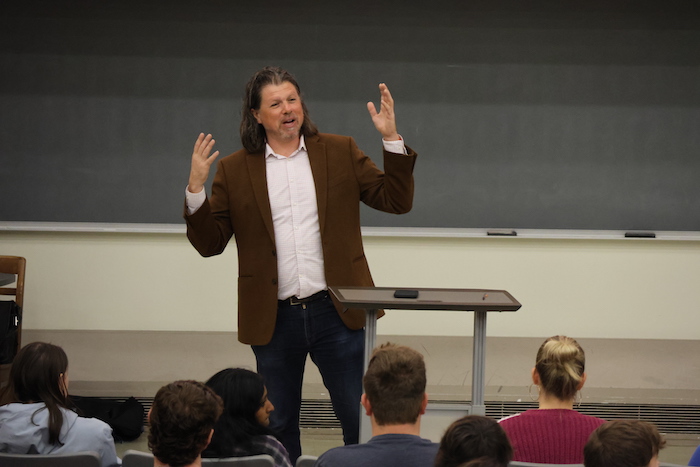
From Germantown Hills, Illinois, Anna Peplowski is on track to an impressive swimming career. Her best events at IU are her 500-meter freestyle and 200- meter backstroke. She was one of 25 Indiana representatives to attend the 2021 Olympic trials and then went on to compete in the 2025 Paris Olympics to win the silver medal in the 800-free relay. With these accomplishments, Peplowski is using NIL opportunities to promote her brand and strengthen her image. Before scrolling down on her Instagram page to see pictures of her smiling with friends and highlights of her swimming events, the first thing that catches the eye is the link in her bio. This link is to her NIL store, where she collaborates with IU to sell her custom-designed IU gear.
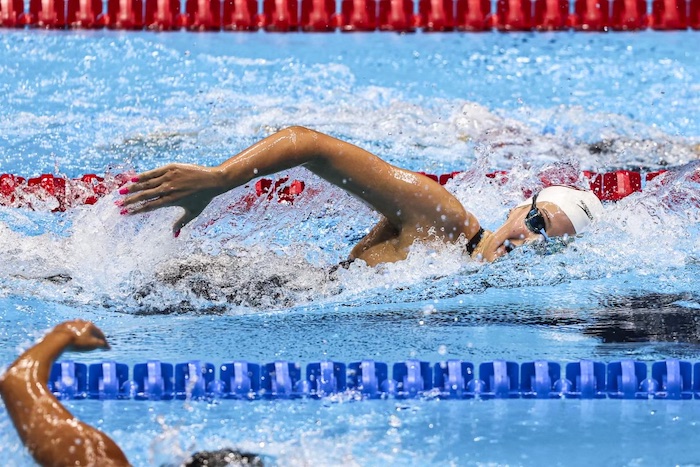
Historically, women athletes have had to work harder to gain visibility. But in the digital age, social media aids in amplifying these athletes’ stories and talents, making it a crucial tool for women athletes to build personal brands and secure endorsements. For athletes like Peplowski, marketing herself through platforms like Instagram has proven to be a necessity in drawing attention to her accomplishments.
Female athletes are emerging as top earners in the NIL space. CNBC reports that women athletes capture a significant share of endorsement deals due to social media’s accessibility and reach. Athletes like Caitlin Clark and Angel Reese have made headlines for their brand deals. NIL is elevating female athletes’ visibility in ways traditional media has never been able to.
This increased visibility for women’s sports is changing public perception by normalizing the success of female athletes. Furthermore, NIL allows these athletes to financially sustain their careers while still in college. This is particularly important for women athletes who often face fewer professional opportunities post-college than their male counterparts.
https://youtu.be/blvbFRLBnb8?si=o7ZlTfwm1gY9aRTJ
Indiana University students share their thoughts on NIL and its impact on women’s sports.
Yet, challenges remain. While women athletes find success in social media, securing sponsorships is less likely due to lower engagement in their sports. Peplowski highlights that there are unique challenges in securing streaming and revenue opportunities in a sport that doesn’t receive much coverage. Sometimes, she has had to go out of her way to secure NIL instead of them coming to her first. In such cases, social media is crucial for women athletes in order to actively pursue NIL partnerships and maintain a presence in the public eye.
“Since NIL has started, so many opportunities have been presented since there wasn’t a lot of recognition in the past. Media attention is very beneficial,” Peplowski states. “People can see what I’m posting, especially locally. It brings more awareness to the company I’m working with.”
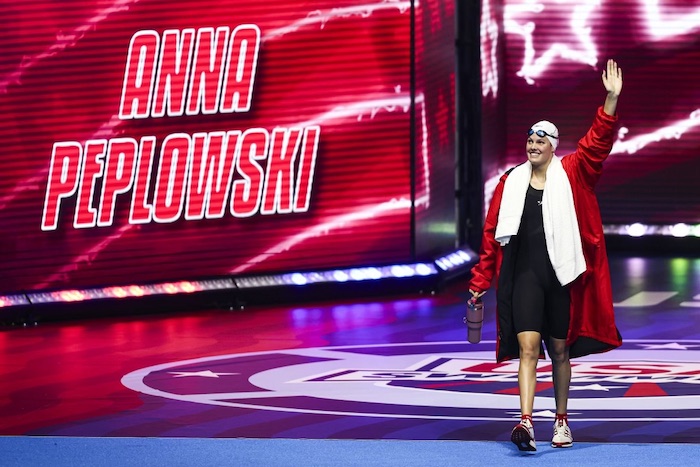
The impact of NIL on women athletes goes beyond financial gains—it’s about representation and empowerment in sports. By providing female athletes the platforms to share their achievements and stories, NIL is paving the way for a more inclusive sports culture. As Peplowski continues training at Indiana University, she’s serving as a role model in the evolving world of college sports and inspiring the next generation of women athletes. As her heart is set on the next Olympics, she will continue to leverage NIL to benefit her athletic career.
By Aina Williams, Oliver Swats, Zach Willard
BLOOMINGTON, Ind. (Nov. 5, 2024) – Three years ago, Indiana University athletics changed the lives of many student-athletes, by allowing them to receive NIL, or Name Image and Likeness compensation. This shift not only has brought financial opportunities to athletes but has also impacted team chemistry and unity. As players start to navigate their personal brands and partnerships, they must balance their aspirations with the all together goals of their teams.
Name Image and Likeness has become a big uprising in the athletic community. Players are able to earn money, brands, and profit in general, depending on their name, image, and likeness. NIL has opened doors for many opportunities for athletes to earn income for what they do best, playing a sport.
The faculty advisor for the Hoosier Network and the head of the IU Sports Media Program, Dr. Galen Clavio, spoke about his understanding of NIL. Clavio said that “NIL is another name for publicity” (Clavio), and can be seen as something that is used so athletes can gain revenue depending on how much the public supports or likes them.
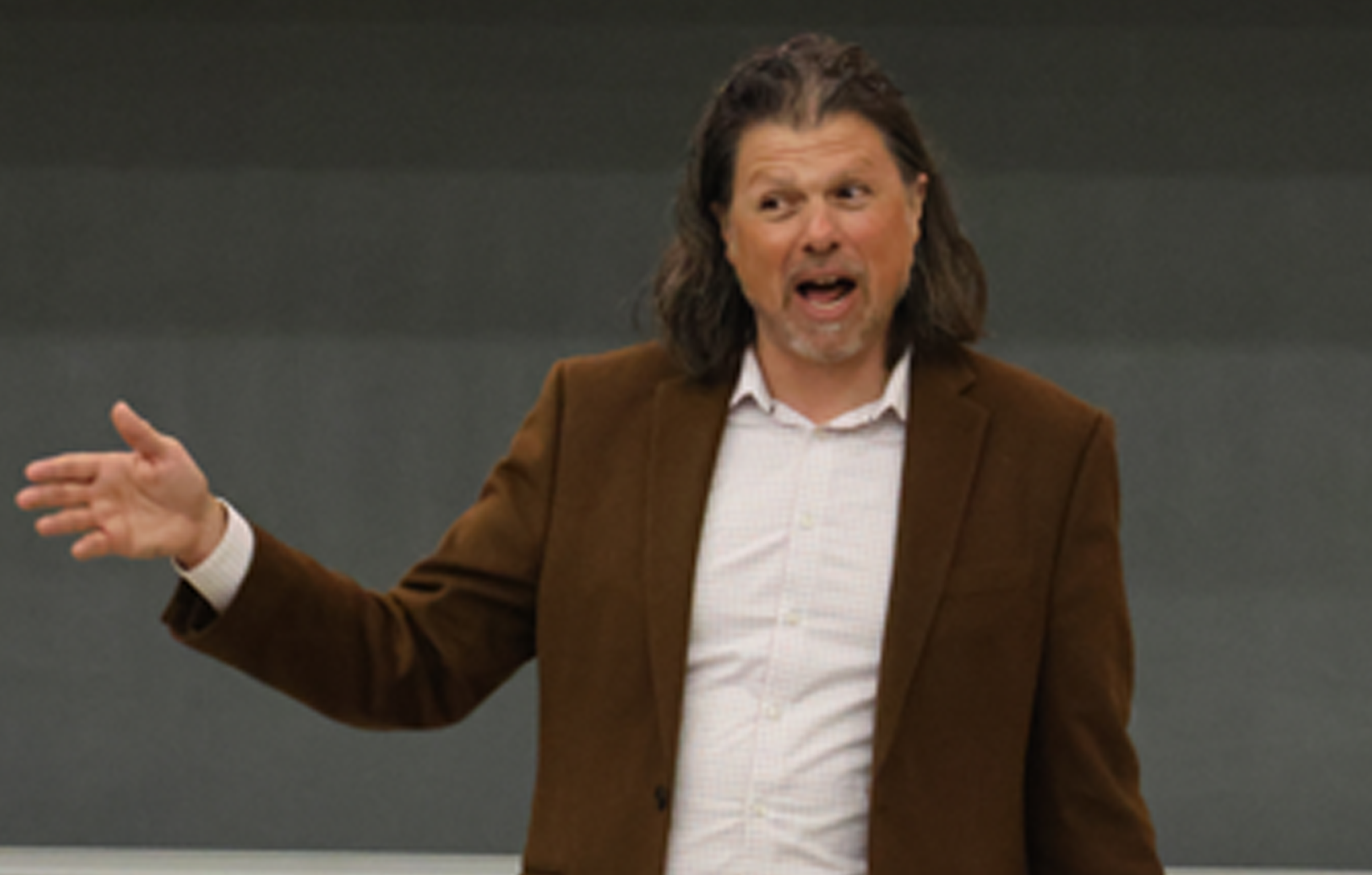
Clavio also talks about how there is NlL from being a good athlete and NIL from being good with media (Clavio). Athletes have an inside look on who is receiving NIL, and with that it can create opinions on who is deserving of NIL deals and who is not.
With NIL becoming more popular, there have been concerns brought up to attention within the aspect of NIL. Depending on the player, some athletes can receive more attention than other athletes leading them to obtain NIL deals. Resentment and jealousy can occur if one is getting NIL deals and you are not. With that, team chemistry and unity can be broken down because players can believe they are equally deserving.
Concerns have been raised when it comes to the effect NIL can have on athletes and on teams in general. To gain more insight on the topic, I spoke with Indiana University Decathlete Garrett Messer to understand his opinion as someone who receives NIL. Messer said “NIL has affected me because I benefit from it […] I would say it has affected my team in which some company’s only do deals for an entire team. For example, one of my teammates has an electrolyte deal where the company would only work with the entire team, so everyone benefited from that”(Messer). He explains that there has been mostly positives surrounding the topic of NIL, but when it comes to team chemistry he has seen some negatives within it.
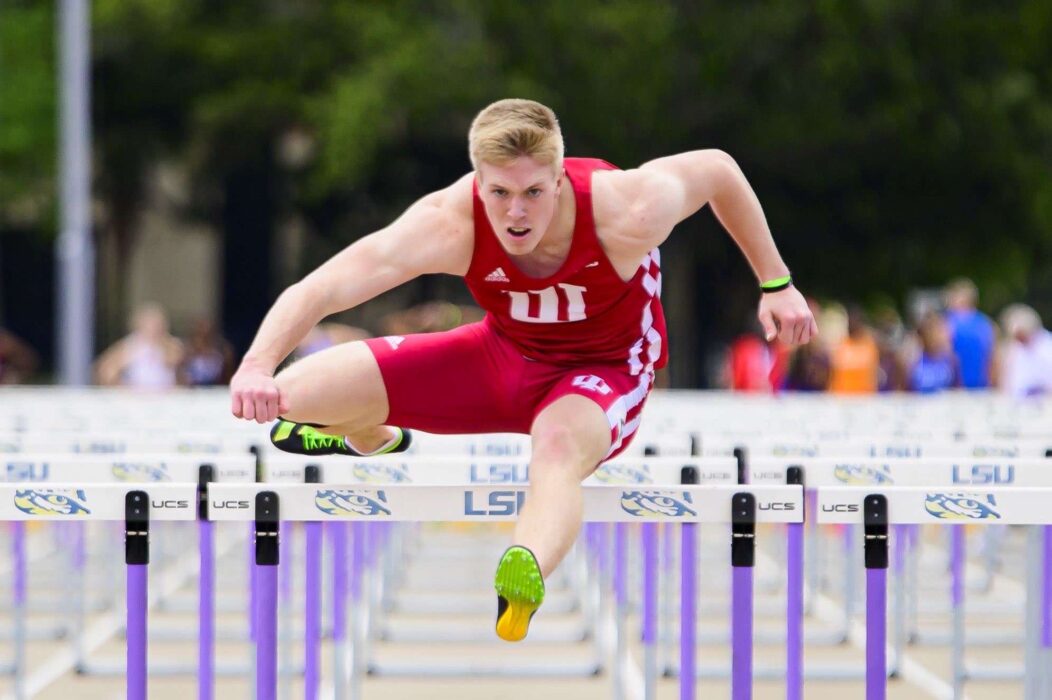
Messer said “I would say in terms of team chemistry, for Indiana’s track team, the culture was unaffected. We’re a team that despite being one of the largest on campus, NIL hasn’t hit packages from the team yet. When it comes to other sport teams on campus, I would say the ones that receive more NIL are the ones were chemistry could start to hit. […] When you feel that you’re working harder and you’re better than the person next to you but they’re getting more NIL, that can create a rift between teammates”(Messer). Jealousy is a main reason why team chemistry can be negatively affected, and with NIL having an upbringing, more jealousy can occur. All in all NIL creates opportunities for individual athletes, but also can create challenges that could threaten cohesion and unity within a team.
NIL changes depending on the sports you talk to with the biggest ones being Football and Basketball. We wanted to approach from different angles with Messer being a decathlete and Jaz Boykin. (football player at Indiana University). We wanted to know whether the overall team chemistry and fairness aspect changes from these two different sports.
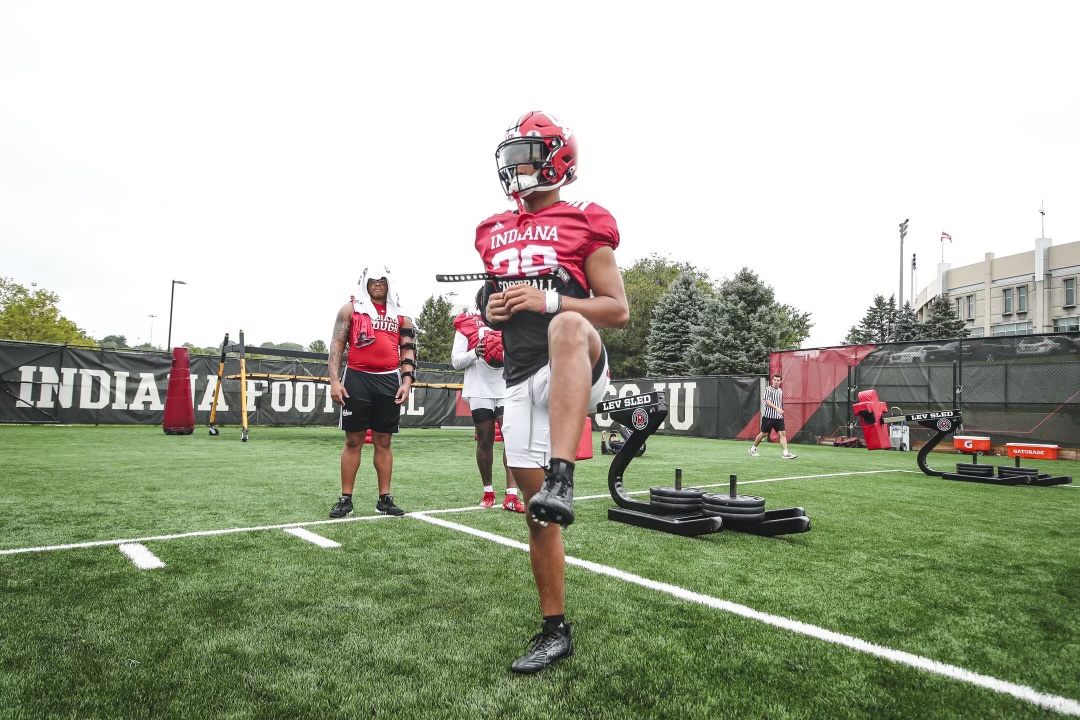
Boykin said, “I don’t feel like it affects the chemistry because the people who aren’t getting paid see the people who are getting paid and want to work their way up to be getting paid.” (Boykin). This was interesting because Messer exclaimed that the other teams with more NIL might be affected more. We hear the opposite viewpoint here with Boykin saying what it’s like with football. “We’re all brothers so everybody is happy for their brother that they’re getting paid.” We had also been thinking before this interview that there would be a lot of jealousy in a bigger sport like football when it comes to money. This could also be a result of the football team having a successful year. Players are excited and stoked to see the team and individual players playing well.
We then asked if NIL is fair to all college athletes. Boykin says, “I wouldn’t say they’re technically fair because the bigger the name, the more money you’ll receive.” (Boykin). This is where we’ve seen in the media how sports of smaller viewership complain about the fairness of NIL. Women’s sports have been a big topic of conversation of this divide. Boykin also mentioned that team NIL deals are much more fair because it benefits the whole team. If the players are playing well then everybody on the team will get that team deal.
Once all is said and done, NIL can help with motivation for players that may not get the same opportunities. It’s refreshing hearing good coming from NIL and the positive impact it can have on the team and the players. You could argue that these different teams have overall similar views on NIL. Although it’s not perfect, you can’t look past the fact that there is much good coming from it.
To gain further clarity of the public’s opinion on the topic of NIL, we interviewed some people on the street about their understanding of it.
https://youtu.be/R-7We_zsa6g?si=RKovR9iUKDGDQi8d
Students Interview people on the street about their opinion on NIL.
We wanted a better understanding of the opinions that the people on the outside looking in, had on the affects of NIL. Many people think there are good outcomes to it, but with that there is negatives. After interviewing people on the street and two athletes that receive NIL, we were able to understand the affects of NIL from an outside and inside perspective. The public’s opinion was that is was good and opens opportunities for athletes to get their name out there. Continuing athletes felt the same way, but also saw how there are times jealousy can occur and have negative affects on a team as a whole.
Because of the fact that more athletes are receiving NIL, it is important to understand how many athletes will chase the money and forget to balance the team within it and that can lead to creating problems. My team dove into how one of these problems were team chemistry being affected, and it is important for athletes to know to balance the money and the overall importance of being on a team.
###
By Natalia Nelson, Kadence Brock and Sidda Benckart
BLOOMINGTON, Ind (Nov. 5, 2024)
An oar sliced into the dark, chilly water. The lazy sun had barely begun to peek over the Elizabeth River, glinting off the wake that streamed behind Alexis Durand’s boat.
While the boat and oars are paid for by Old Dominion University, Durand is not. Her racing suit, however, was free— given to her in exchange for an Instagram post. The deal wouldn’t have been possible without a landmark Supreme Court case decided three years ago.
The Supreme Court’s name, image, and likeness ruling has fundamentally changed the college athletics landscape. It permits college athletes to profit from their brand image and accept endorsements, which the NCAA previously disallowed. But does it benefit every athlete equally, or does the popularity of the sport determine who gets the brand deals?
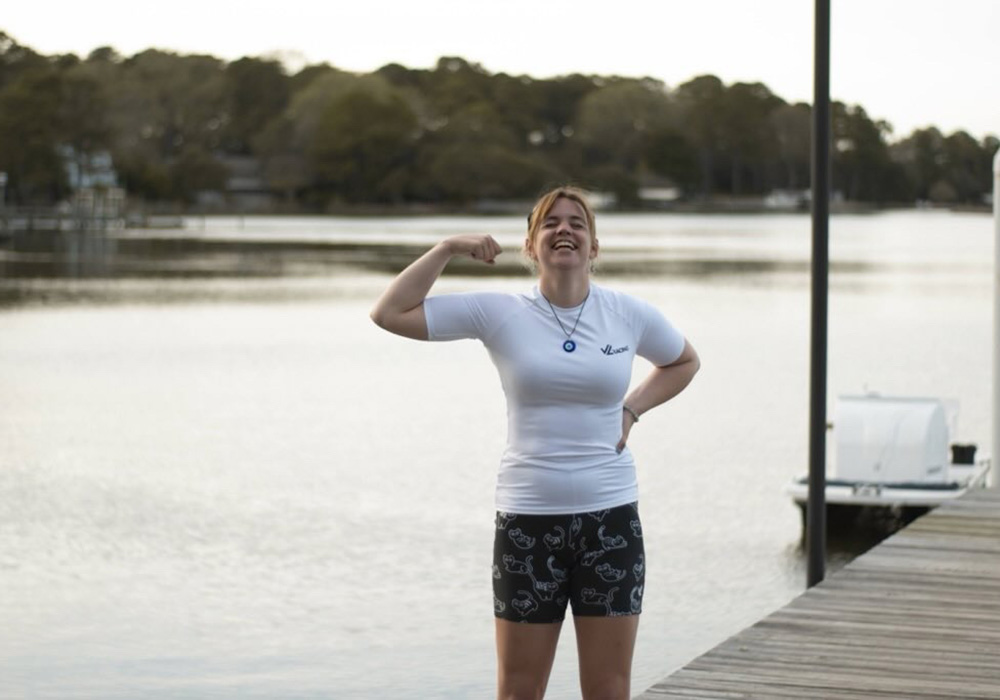
Galen Clavio, the Director of the National Sports Journalism Center at Indiana University, thought that the marketability of each athlete played a role.
“There’s the NIL that comes from just being a good athlete, and ultimately, the idea that you have an intrinsic market value at the college level as an athlete in whatever sport,” Clavio said. “And that value is not equal.”
He went on to add that a men’s golf team member would generally have significantly less market value than a comparable basketball or football player.
“Simply because of the sheer amount of money through television contracts, ticket sales, and other items that come through basketball and football that don’t come through golf,” Clavio said.
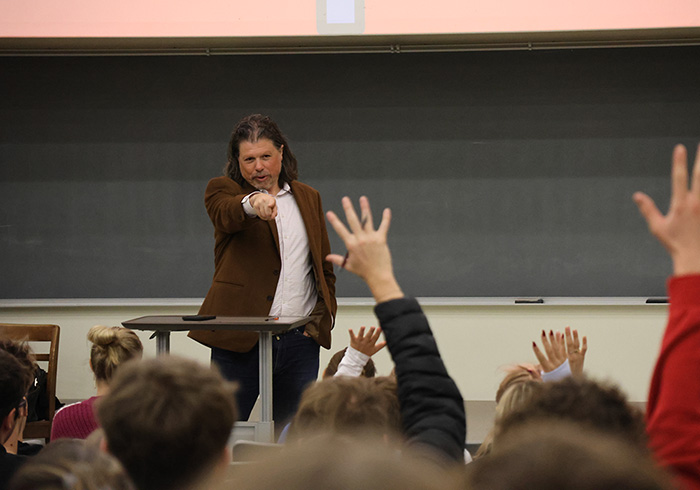
Ball State D1 golfer Landon “Happy” Gilmore agreed that sports with less media coverage may have to work harder to get deals. He was dubbed the nickname by his coach after winning the “Little People’s Golf Championship” at 6 years old. Despite being in a smaller (less popular) sport, he’s managed to grab several NIL deals for himself after a tweet about his commitment to Ball State went viral.
It was retweeted by Adam Sandler, the actor who played the titular role of Happy Gilmore in the 90’s golf comedy, and Gilmore gained national attention.
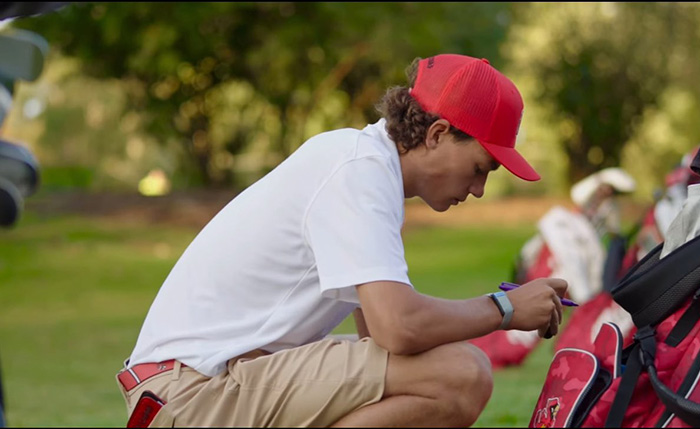
“NIL has benefitted me quite a bit,” Gilmore said. “Being able to get clothing and equipment took a load off my parents financially.”
He said golf at the collegiate level doesn’t come with the same type of viewership as football or basketball. According to Gilmore, lower viewership sports are at a disadvantage when it comes to NIL, but he said it ultimately came down to marketing.
“NIL is a person-to-person thing. It more or less depends on how popular you are,” Gilmore said.
Like Gilmore, D1 rower for Old Dominion University Alexis Durand thinks it’s still possible for athletes from smaller sports to get brand deals with extra effort.
“I feel like other sports that aren’t as broadcasted definitely have to work harder for deals and actually have to market themselves,” Durand said. “Whereas the sports that do get broadcasted don’t have to market themselves.”
Durand has an ambassadorship with a rowing apparel company called JL Racing. She said she applied online for the program last summer and was accepted because she posts consistently on social media. Her Instagram profile is followed by over 700 users.
Through the ambassadorship, Durand said she was able to receive free racing suits and discount codes if she posted pictures in the suits to her Instagram.
“I do know a few people who didn’t get into [the ambassador program] this year because they don’t post as much on their social media,” Durand said. “And you also obviously have to be an active rower or coach.”
She said that a few of the other girls on her team were able to get similar brand deals with smaller clothing companies if they had a social media presence.
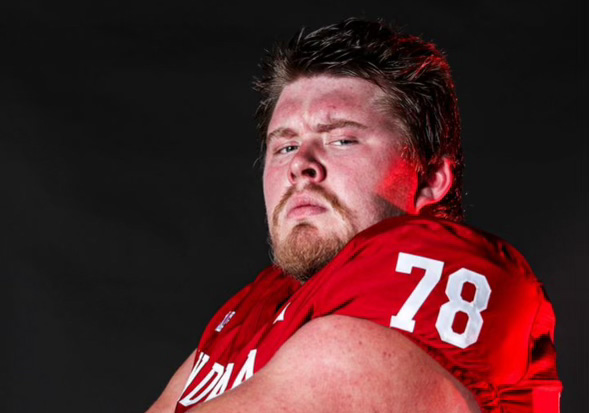
Her experience differs from that of Cooper Jones. He’s an offensive lineman for Indiana University football and doesn’t pay much attention to his social media or actively seek out NIL deals– but he’s still able to profit off of them.
“A lot of the guys on the team had an opportunity to take part in [the brand deal], and it was through Hoosiers for Good,” Jones said. “We just had to do a couple different social media posts, then once we filled those requirements, we got paid.”
He added that the IU football team also received a 3,000 dollar stipend at the end of each semester for staying academically eligible, a reward which didn’t exist before the NIL ruling. Durand, on the other hand, isn’t on scholarship for rowing.
“I think most important is just as long as the people that are getting paid are working really hard, then at least you know that they’re earning what they got,” Jones said.
It was the eve of Homecoming Weekend, and Indiana University’s campus was teeming with sports fans preparing to watch the big game. We asked a diverse group of strangers if they thought the Name, Image, and Likeness ruling benefited all sports equally.
By Audrey Lash, Anderson Stuckey, Daisy Desilvia
BLOOMINGTON, Ind (Nov. 5, 2024)-It is a brisk fall day, and swimmers are arriving for their morning practice. It is 6:00 am, and the swimmers have their first of two practices. He is in his second year of swimming for IU. Most would be tired and groggy at this time, but Lucas Byrd is not. He has been doing these early morning practices since he was 14. They have a two-hour practice, then 4 hours of class each day, then another practice almost right when he gets out of class. Every single day, he has 4+ hours of practice and 4+ hours of school. This is the definition of a Student athlete.
These moments represent the countless hours NCAA college athletes put into their Student-athlete lives. Just 4 years ago, Byrd would have been putting in the same amount of time he is now, but he wouldn’t have the ability to make any money or do anything. He wouldn’t be able to get a job or make money off his name, image, or likeness. Now, due to NIL, he is allowed to do all of those things. Although despite the time, energy, and effort he puts into being a student-athlete, not all sports are equal.
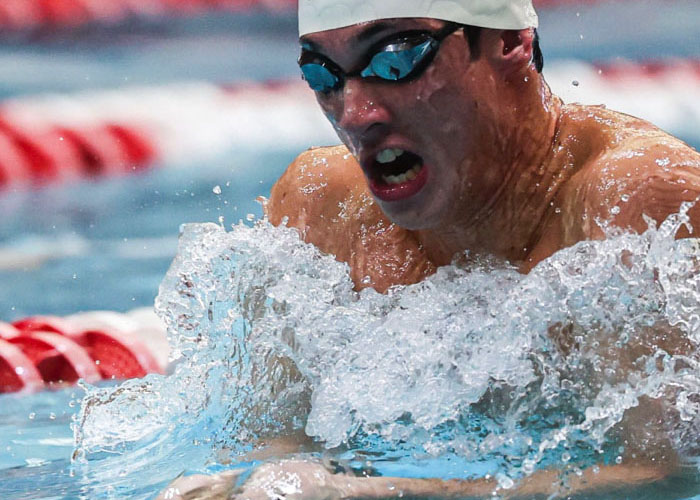
Even though Byrd and his teammates put in the same if not more time than other athletes in other sports, the money they receive is not even in the same world as that of an IU basketball player; Byrd said, “You know, a lot of these sports put in just as much work, if not more, than basketball or football, yet they are getting thousands of dollars, and we maybe get enough to pay for a meal or two.” While talking about how and why NIL differs so much between different sports and athletes, Byrd said, “It is really all about your follower count; I am kind of lacking on the follower count; some of my teammates are doing really well with that.” Byrd and his teammates are still trying to navigate NIL and do what is best for them.
Dr.Clavio, a respected figure in sports media and education, is gearing up for another day of shaping the next generation of sports journalists. As he reflects on the changes in the sports journalism landscape, Clavio acknowledges the influence of NIL policies on both athletes and media coverage.
Recently, he delivered an engaging lecture to a C250 class, discussing the complexities of sports reporting in the context of NIL.“The dynamic has shifted dramatically,” he says. Clavio stresses the need for a balanced approach to coverage and emphasizes that NIL is based on how popular a person or sport is, which is not fair. For example, something like women’s volleyball is better than something like football. Clavio advocates for a more nuanced understanding of these issues, urging aspiring journalists to recognize the importance of equitable representation in their reporting, to the point that we must tell the stories of all athletes, regardless of the popularity of their sport.
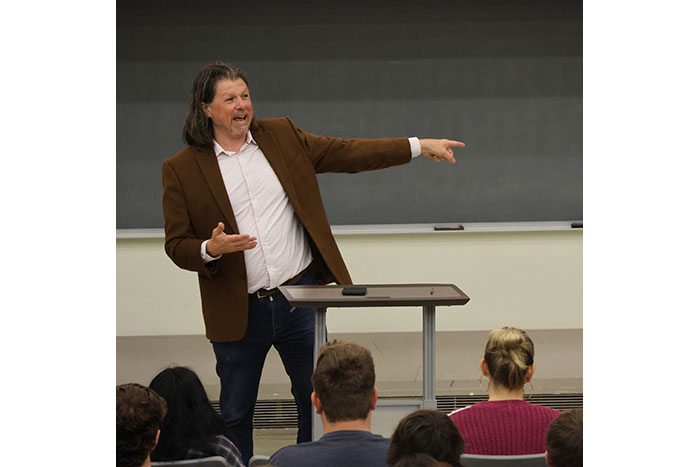
NIL has reshaped the relationship between athletes, media, and fans, and Dr.Clavio makes this extremely clear. While NIL presents exciting opportunities, it also poses challenges that require thoughtful consideration and ethical reporting practices. In today’s day and age, it’s crucial to recognize and credit all athletes in all sorts of divisions and sports, and this is exactly what Clavio is advocating for and making apparent to people. He believes that elevating underrepresented sports not only enriches the narrative of athletics but also inspires a more diverse audience.
On the other side of Bloomington, Tyler Harris is getting ready to start his day off at Hoosier Connect. He is the Executive Director at Hoosier Connect. He joined the company last year but spent the last four years before that with the athletic department here at IU. He specialized in and dealt with NIL, so he has been very heavily involved with NIL since its very beginning. He has been involved in numerous NIL deals, helped hundreds of athletes, and had to navigate an always-changing process.
Hoosier Connect tries to bring in as many athletes from different sports as it can. Harris said, “Hoosier Connect wants to be able to help and sign on as many people as possible. They have multiple swimmers, divers, and track and field athletes. Now, the support comes in a variety of ways, and it is not always money.” Harris reiterated how Hoosier Connect offers tons of help and assistance other than just money.

One of the big things that they can assist with is building student athletes’ brands. Harris says, “Athletes really need to put an emphasis on building their brand. We encourage them to leverage the name on the front of your jersey to help grow the name on the back.” He mentioned multiple instances of IU athletes doing this, including, but not limited to, Sydney Parrish and Miller Kopp.
https://youtu.be/8fwC_ejYVJ4
People on the streets of Kirkwood have many opinions on the effects of NIL. They share their opinions on NIL as a whole and how some athletes deserve (or don’t) to get more NIL.
By Parker Matthews, Amelia Craig and Jack George
BLOOMINGTON, Indiana (Nov. 5, 2024) - Fresh off another Indiana University football win over … Continue Reading ››By Allie Davis, Kadie O’Bannon, Gracie Paul
BLOOMINGTON, Ind. (Nov. 5, 2024) —
Brothers Jake and Dillon Thieneman have been playing football for as long as they can remember. Little did they know that their passion for the game could turn into a revenue-earning career.
This revenue is known as something called NIL, or name, image and likeness.
Jake Thieneman is a former Purdue safety and 2018 graduate, while Dillon Thieneman is a current sophomore safety at Purdue. Jake Thieneman began his journey at Purdue as a walk-on in 2014, and by his fifth year, he had climbed his way to team captain and starter. Dillon Thieneman had a different experience; he graduated high school after his first trimester senior year to begin playing for Purdue in the spring semester. Dillon Thieneman quickly earned his starting position as a true freshman safety. During his first year, Dillon Thieneman was named Third-team All-American, Big Ten Freshman of the Year, and Second-team All-Big Ten.
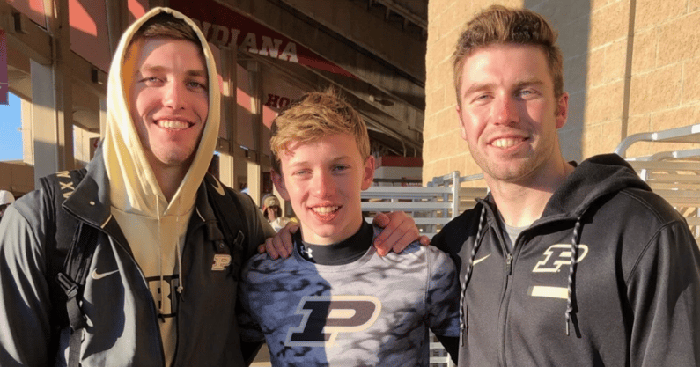
NIL has been a recurring topic over the past decade. One pivotal event reshaped the discussion: the House v. NCAA settlement. Filed in 2020, this lawsuit was brought by former Arizona State swimmer Grant House and former TCU and Oregon basketball player Sedona Prince, who sued the NCAA for its past ban on athletes getting compensated for their name, image and likeness before 2021. They argued that the ban violated Section 1 of the Sherman Act by restricting athletes’ ability to receive fair earnings. As of May 2024, the NCAA is facing a $2.78 billion settlement, potentially allowing Division I athletes to receive back pay for missed NIL opportunities and aiming to establish a more equitable system for current and future athletes.
The NCAA is expected to grant $1.2 billion, with Power Five Conference schools covering 24% of future withheld revenues. Over the next decade, money will be distributed to athletes who played between 2016 and 2021. If approved, universities would begin payments in July 2025. At the press conference, sports media expert Galen Clavio noted the potential discontent among former players. “A lot of college athletes are going to be arguing that we are in the mid-2000s,” Clavio said, emphasizing that athletes who played before 2016 may question why they aren’t receiving compensation. This sentiment highlights the ongoing uncertainty around the proposal.

Further insight was given in an interview with the Thieneman brothers. Jake Thieneman had an overall positive perspective on the topic, citing the many opportunities NIL creates for players. Though he’s now a graduate, he wishes he’d had this opportunity when he played and believes past players should be compensated for their contributions to their programs. “I think it was unethical to prevent them from being compensated given the value they were providing to the schools and how much revenue they were generating,” he said.
Dillon Thieneman had a different perspective. While he acknowledged the positive effects of NIL, he also pointed out potential downsides. “Athletes are now able to get paid and receive other benefits from their play on the field and presence they have off the field,” he said. However, he added, “people do want to follow the money, and that leads to more people entering the transfer portal to find money for what they think they are worth.” Dillon Thieneman emphasized the growing divide between schools with established NIL programs and those with smaller budgets, resulting in a recruitment imbalance as top players gravitate toward wealthier schools. He also disagrees with the ruling that past players should receive compensation.
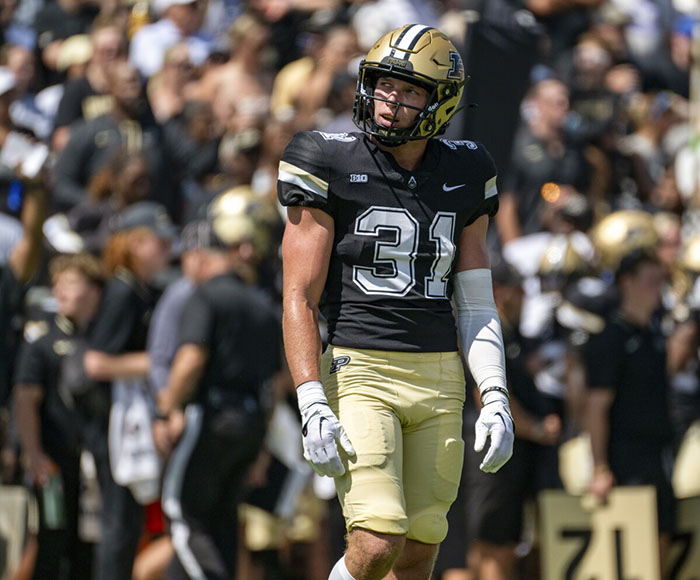
Dillon Thieneman shared his experience with securing an NIL deal, noting that the process can be somewhat stressful but rewarding. “The process can be a little stressful, but I enjoy it — getting to try new things like going to the INDY 500 track and recently doing a meal plan deal to receive frequent meals,” he said.
Jake Thieneman, who helped Dillon Thieneman negotiate his NIL deal, provided additional insight into the process. “For the deals between the player and the collective, the player or a representative for the player negotiates with the collective and comes to an agreement on how much they’ll be compensated annually based on the player’s position, their skill level, and their contribution to the team.”
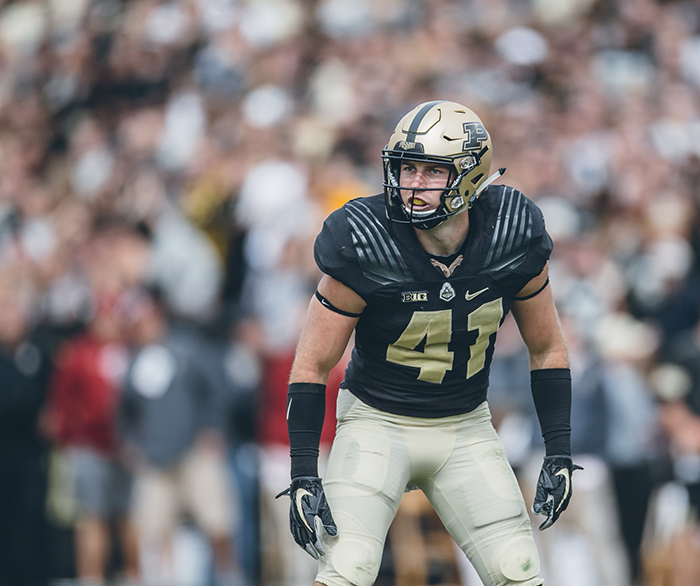
The Thieneman brothers stand on different sides of the NIL discussion.
The debate over NIL continues to evolve daily. With college sports having a constantly growing media presence, this topic isn’t going away anytime soon. While the future remains uncertain, the opportunities for college athletes are only expanding.
https://youtu.be/yHGH3D6HfC4?feature=shared
Voxpop interviews with three strangers on their opinions of the House v. NCAA settlement
By Kennedy Gaynor, Charlie McLain, Ava Boyd, and Sofie Yurewicz
BLOOMINGTON—Indiana University football is undefeated and having its best season in program history, and NIL is thriving for hoosier athletes.
It’s Saturday, November 2, 2024. The Indiana Hoosiers are in East Lansing to take on the Michigan State Spartans for the Old Brass Spittoon, but that’s not all the Hoosiers are looking for. IU football has started 8-0 for just the second time in program history and is seeking their first ever 9-0 start—but how did the Hoosiers get here?

A program that’s won just nine games over their previous three seasons is about to win their ninth game of the 2024 season in as many games played. One of the greatest turnarounds in college football history is taking place right here in Bloomington, but what is the key to this sudden success? The answer is Name Image and Likeness (NIL), the recent initiative in college sports that allows college athletes to be paid for their brand. “Name, image, and likeness is another set of words for right of publicity,” says Dr. Galen Clavio; the head of IU’s Sports Media program.
With recent Name, Image, and Likeness (NIL) regulations, Indiana University athletes now have new ways to profit from their personal brands, gaining financial support and career-building opportunities while still in college. Proponents argue that NIL reduces athletes’ financial stress, allowing them to focus more on academics and sports, while critics worry that NIL could shift focus away from team dedication. Mika Millbach, a longtime IU supporter, believes these deals are vital for athletes’ growth both on and off the field, asserting they allow students to reach their full potential without the financial pressures many face.

Brown University’s sophomore quarterback James Murphy shared his insight on the new landscape of NIL. He shared valuable information about the opportunities and challenges athletes at the collegiate level face because of NIL—something he knows very well, having been affected. In an interview with Murphy, he says “NIL has completely changed the landscape of college sports as a whole. Athletes are not only finally getting financially rewarded for their hard work and sacrifice- but it also has played a big role in recruiting more student athletes as well. Schools that can offer more money to the athletes through collectives and brand deals will be more appealing during the recruiting process.”
Mika Millbach, best friend of an IU professor and massive Indiana sports fan, believes that NIL deals are vital for the Indiana football team to reach its full potential. He asserts that these agreements not only offer athletes financial support but also contribute to their overall education by lessening financial stress, allowing them to focus more on academics. “I think the program has had an incredible impact and without this program I think that the students would suffer…” he said. For IU, Millbach argues, NIL could mean attracting more talented athletes and boosting the team’s performance, which would ultimately bring more recognition and funding to the university. Millbach also believes that NIL leads to more educated athletes by the persuasion of the deal.
Two junior students, Kate and Olivia, admitted they didn’t know much about NIL or its impact on student-athletes but were eager to share their thoughts. “I do not keep up with football much,” Allie noted, “but I have noticed that our team is continuing to succeed and are leading the season 6-0.” This led Olivia to ask Kate if the team’s winning streak might have more to do with coaching than NIL. After a brief discussion, they both concluded that Coach Cignetti’s leadership, rather than NIL deals, is likely the driving force behind the team’s recent success. Their perspective suggests that factors beyond NIL, like strong coaching, could play a larger role in team performance, providing a counterpoint to the idea that NIL alone is shaping athletic outcomes.

Football’s second-string quarterback, Tayven Jackson, shared his insights on how NIL has positively impacted student-athletes, especially those from challenging backgrounds. “A lot of my teammates come from a rough background, and so now that they can make money, they can help their families and their cousins and people that are sick in their families,” Jackson explained. For Jackson, NIL deals go beyond personal gain—they offer student-athletes a chance to support loved ones and make a difference off the field. He also noted the importance of being wise with NIL opportunities, advising fellow athletes to work with agents to secure the right deals and invest earnings responsibly rather than spending recklessly. In the long term, Jackson hopes to see NIL deals that help athletes promote their brands and use these platforms meaningfully, rather than just providing a paycheck. His perspective showcases NIL as a unique opportunity for financial growth, family support, and career preparation, but one that also requires thoughtful management.
As Indiana University’s football team makes history with an unprecedented winning season, the role of Name, Image, and Likeness (NIL) in their success has sparked discussions across the campus and beyond. While some attribute the team’s performance to skilled coaching and strong leadership, others, like quarterback Tayven Jackson and IU supporter Mika Millbach, believe NIL has provided athletes with essential financial support and opportunities to grow both on and off the field. NIL has not only helped players like Jackson support their families but has also created a new pathway for student-athletes to build their futures beyond college sports. As NIL continues to evolve, its impact on programs like IU’s football team highlights a transformative shift in college athletics, one that empowers athletes to succeed academically, athletically, and professionally. Whether through coaching or NIL, the Hoosiers’ extraordinary season is a testament to the power of investing in student-athletes, marking an exciting new era for Indiana University sports.
Tayven Jackson, sophomore quarterback at IU, opens up about his experiences with NIL and its impact on college athletes. In this interview, he offers valuable insights on navigating the new landscape of student-athlete compensation.
In a series of street interviews, people connected to IU share their thoughts on the changing landscape of NIL. Their perspectives highlight how NIL is shaping the future of student-athletes and the university community.
###